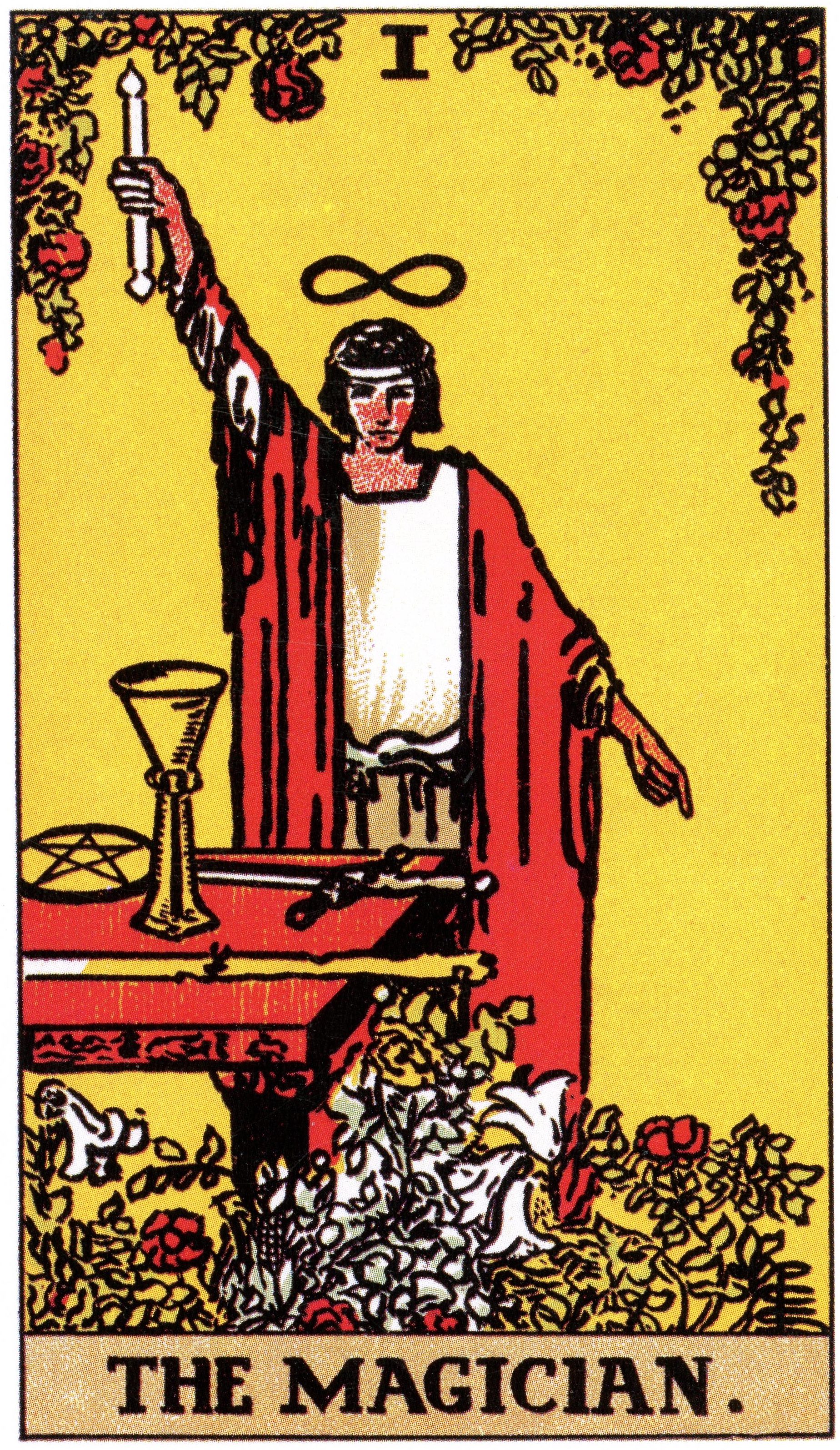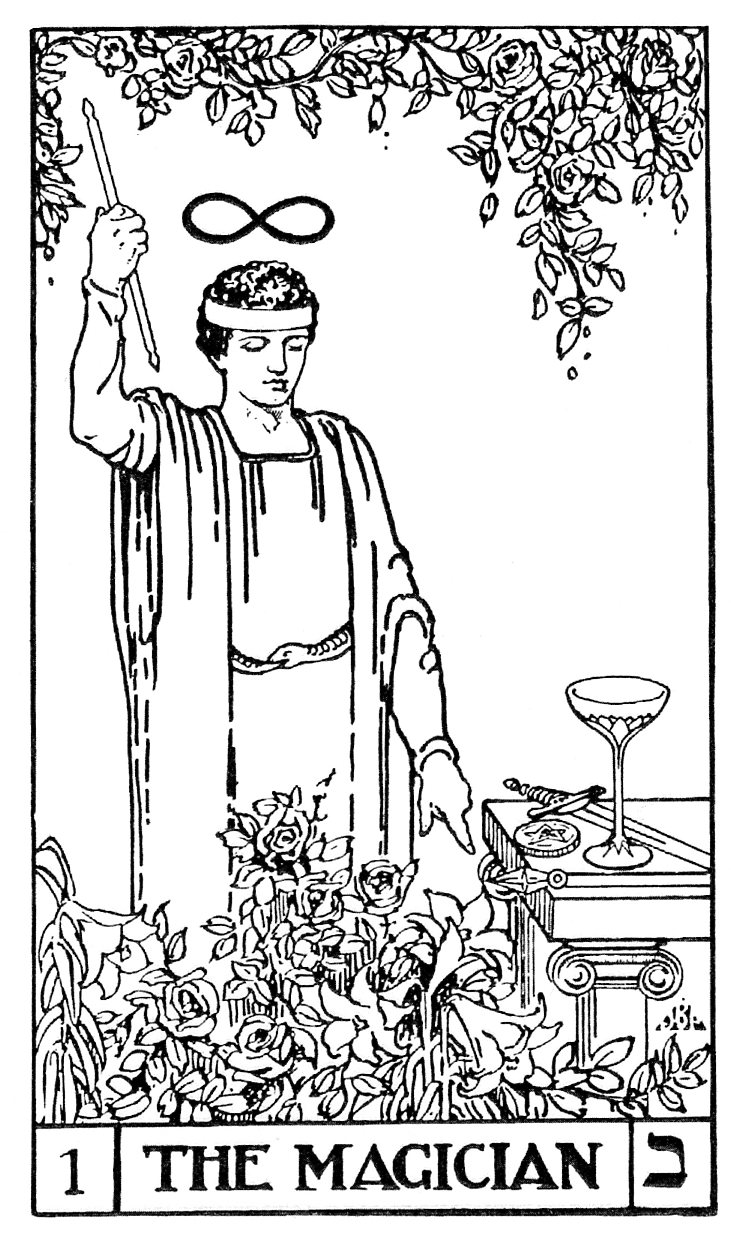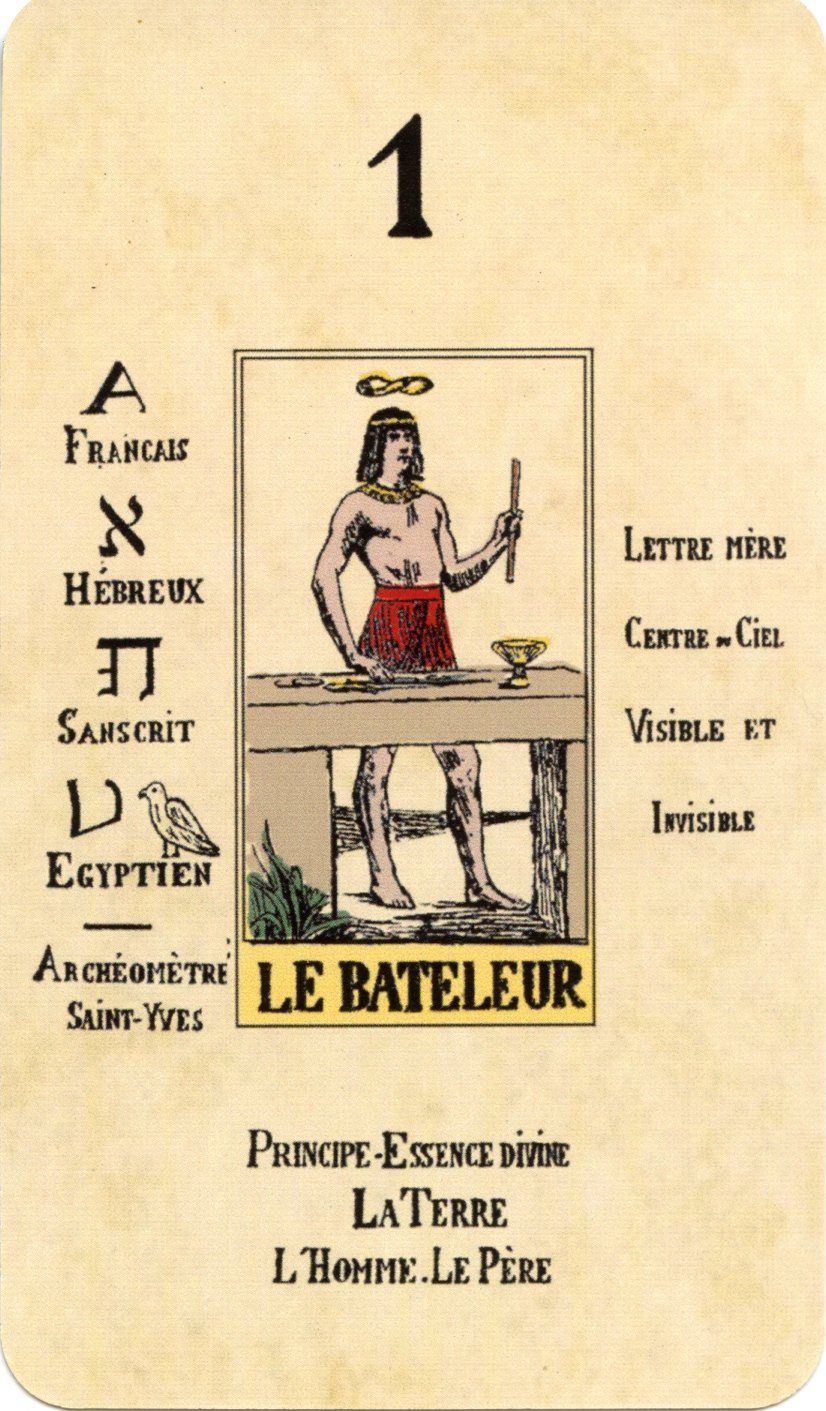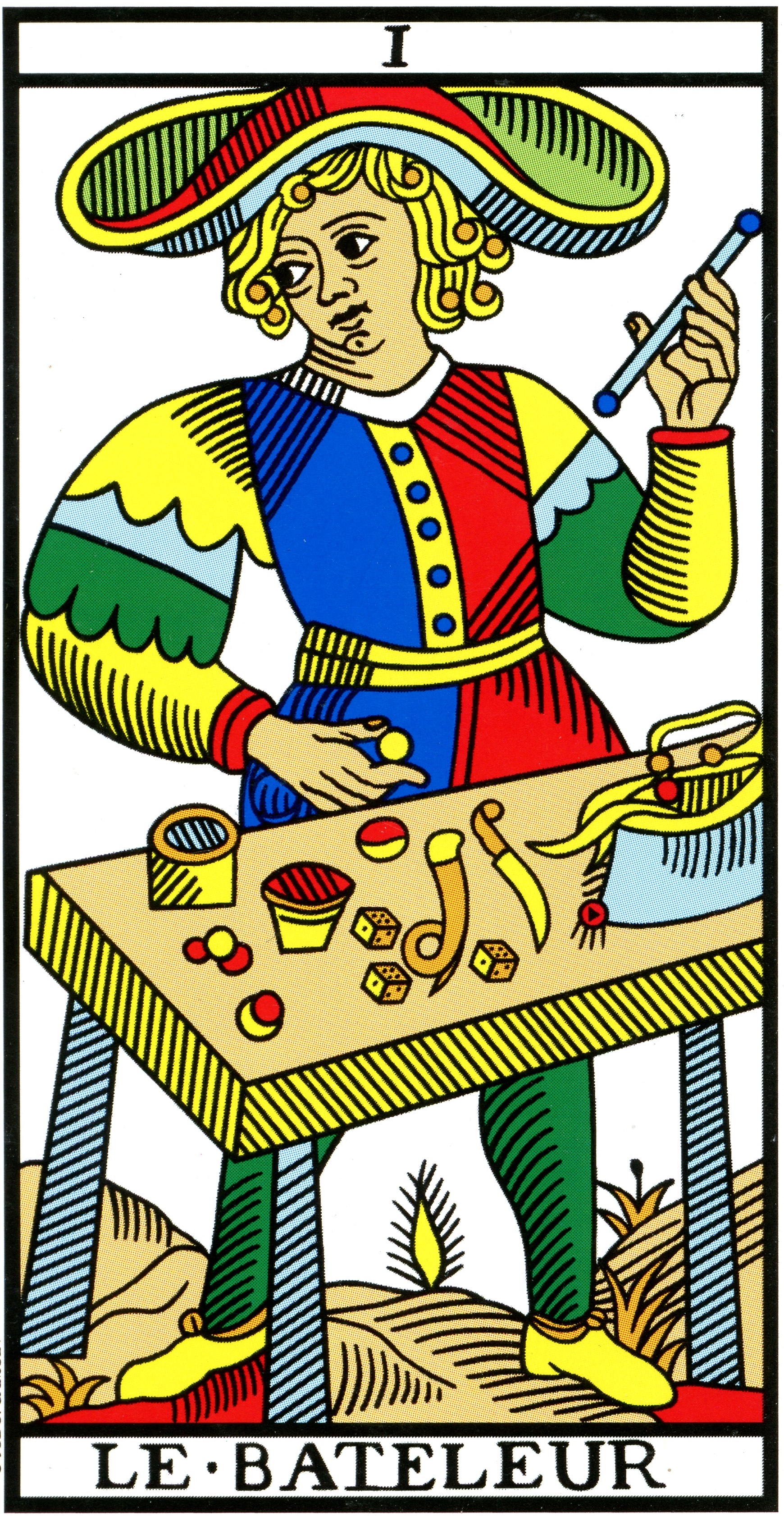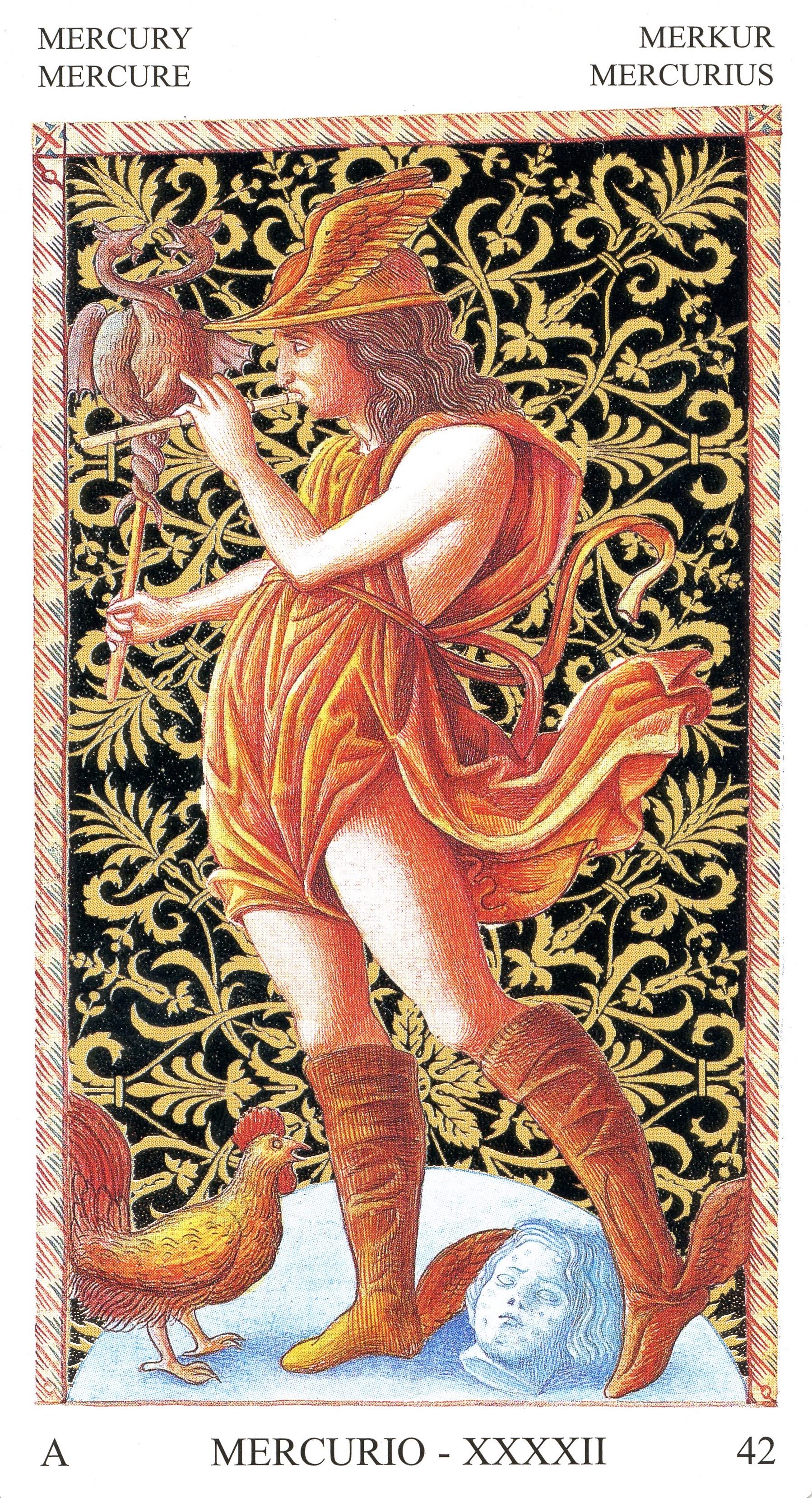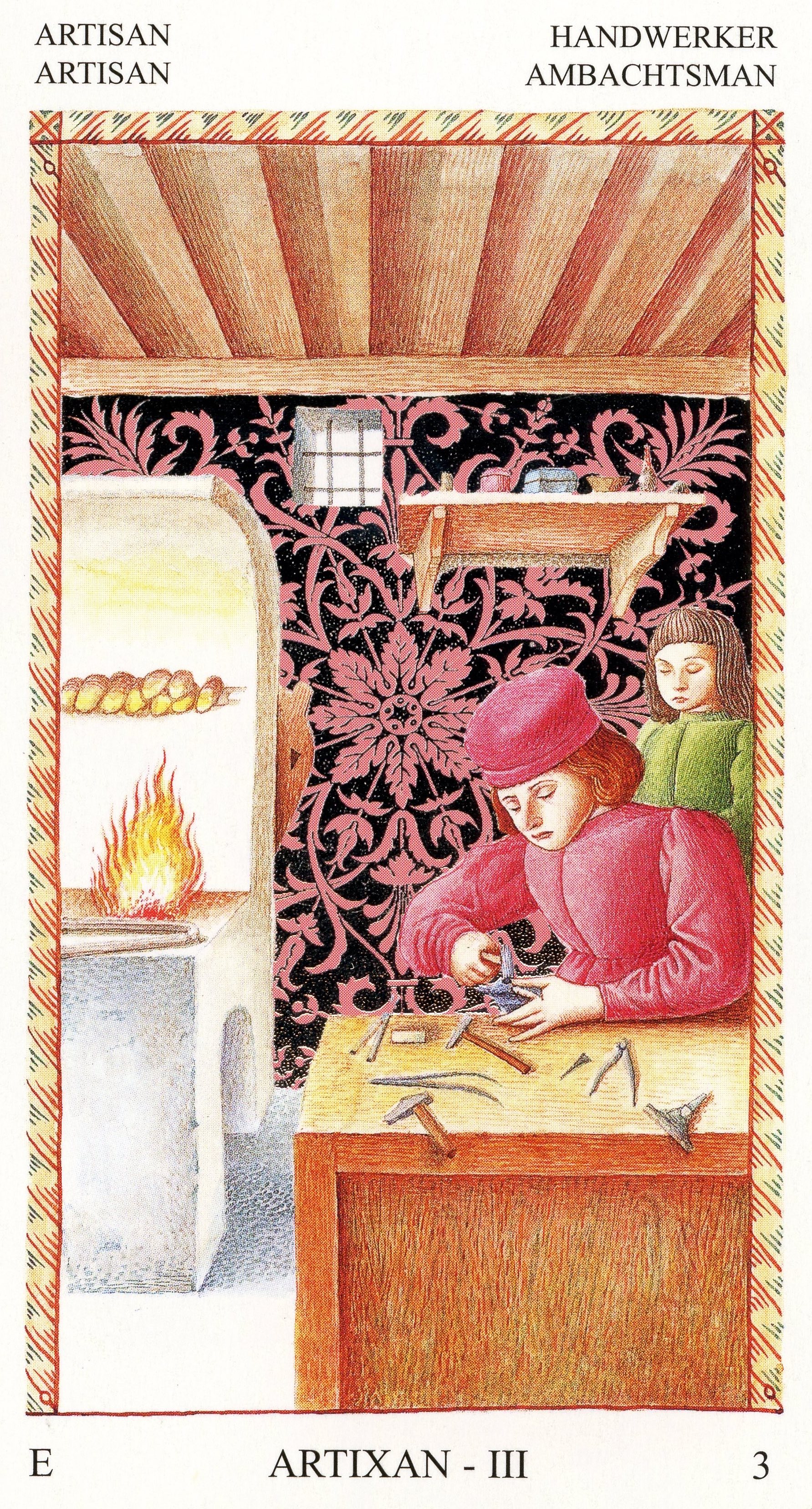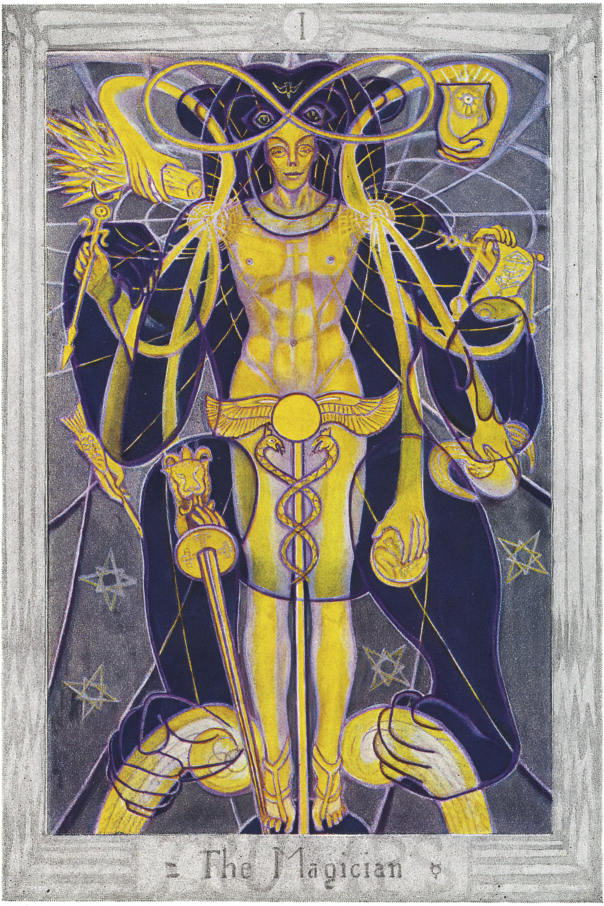The Magician card symbolizes the God of Magic, Hermes / Mercury / Thoth, in various levels of exaltation. Older versions such as the Visconti Sforza deck or the Mantegna deck show the Magician as a Craftsman, while the newer Thoth deck shows an actualized God. The Mantegna deck even has two different cards, one for Artisan and one for Mercury. I believe these eventually blended into the modern “Magus” card.
Some other versions of the card depict an actual stage magician, such as the Charles VI deck, and the Marseille deck. The "tools" of the Magician were his Cups and Balls. These later morphed into the traditional Four Weapons of the Tarot, the Disk, the Sword, the Cup and the Wand.
The card was previously called "Le Bateleur", which means "the Juggler" in French. This also aligns more with the stage Magician origin.
The Magician card symbolizes the God of Magic, Hermes / Mercury / Thoth, in various levels of exaltation. Older versions such as the Visconti Sforza deck or the Mantegna deck show the Magician as a Craftsman, while the newer Thoth deck shows an actualized God. The Mantegna deck even has two different cards, one for Artisan and one for Mercury. I believe these eventually blended into the modern “Magus” card.
Some other versions of the card depict an actual stage magician, such as the Charles VI deck, and the Marseille deck. The "tools" of the Magician were his Cups and Balls. These later morphed into the traditional Four Weapons of the Tarot, the Disk, the Sword, the Cup and the Wand.
The card was previously called "Le Bateleur", which means "the Juggler" in French. This also aligns more with the stage Magician origin.



